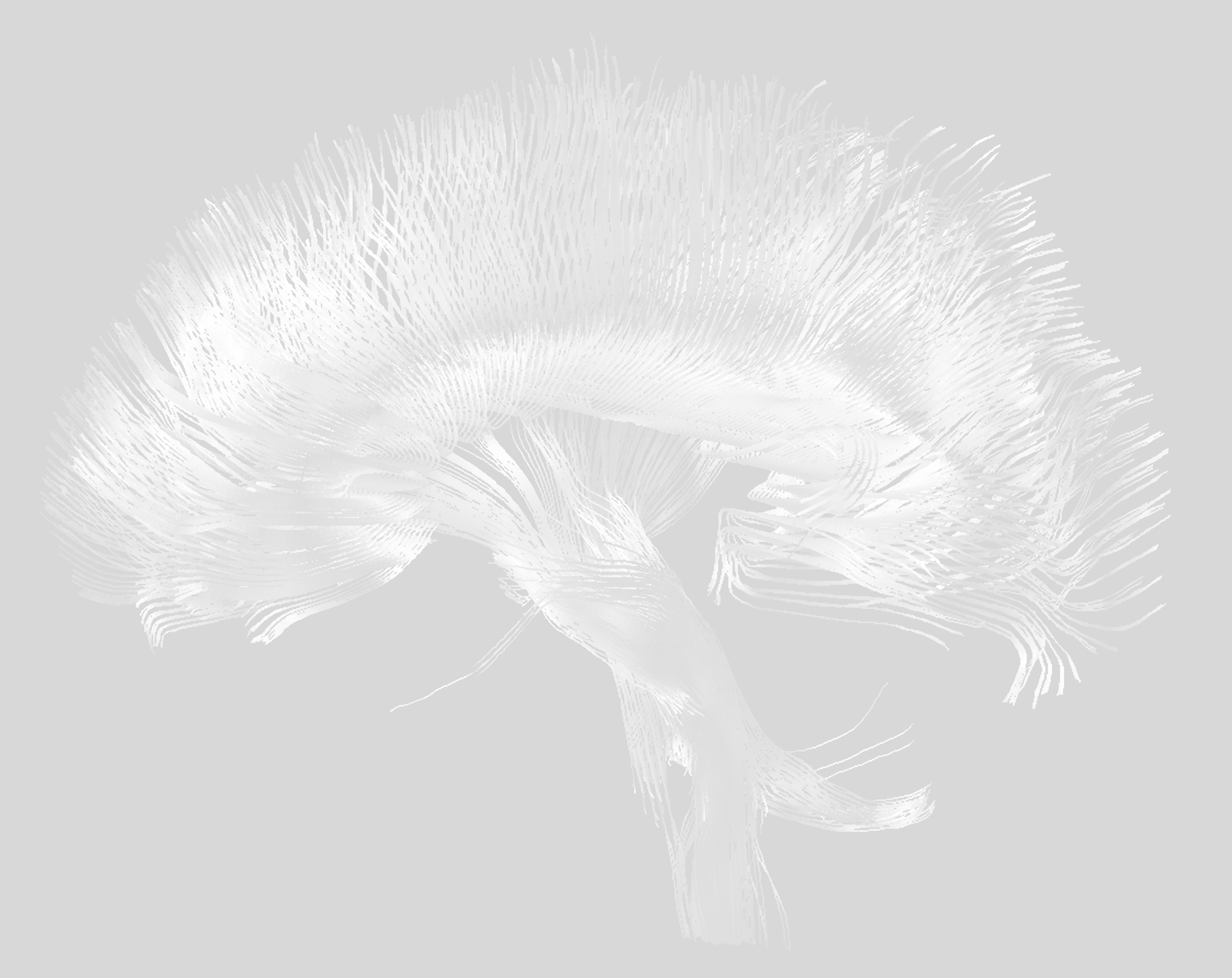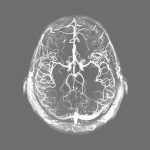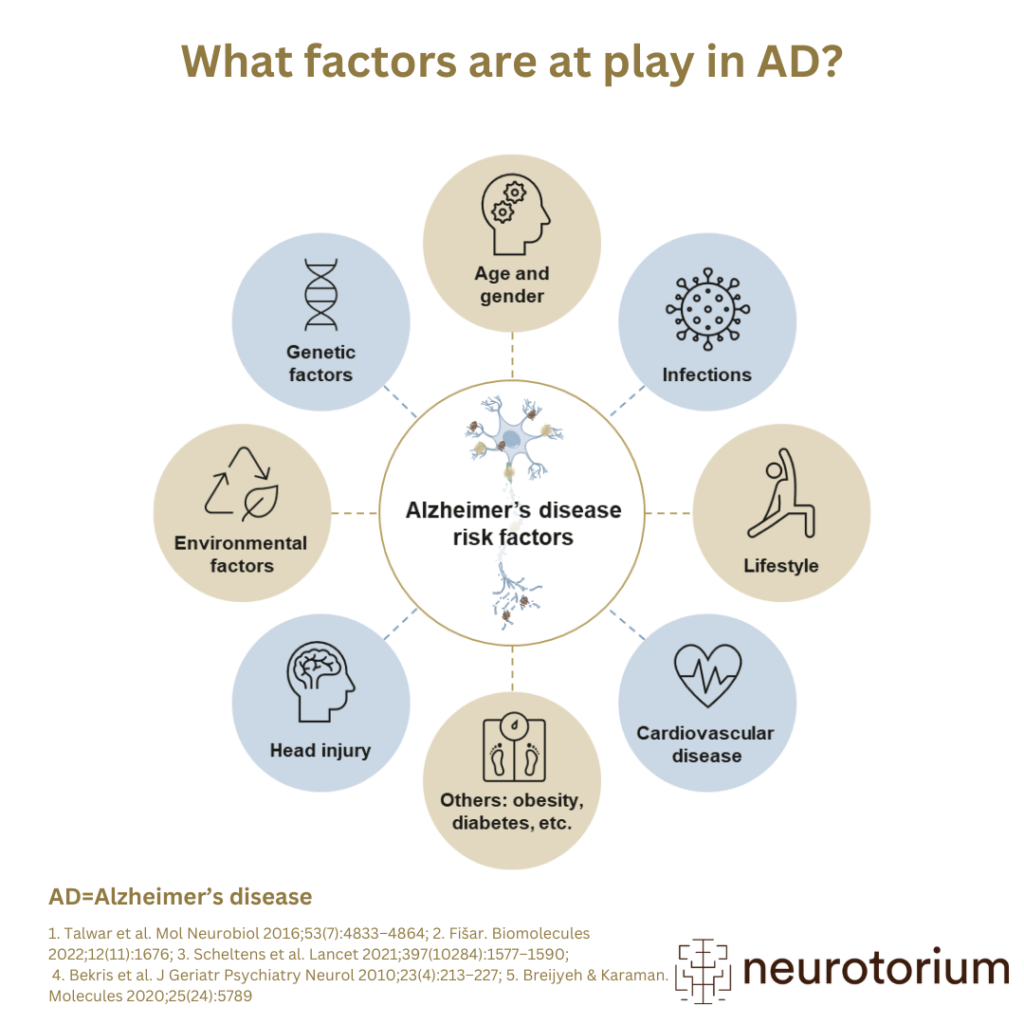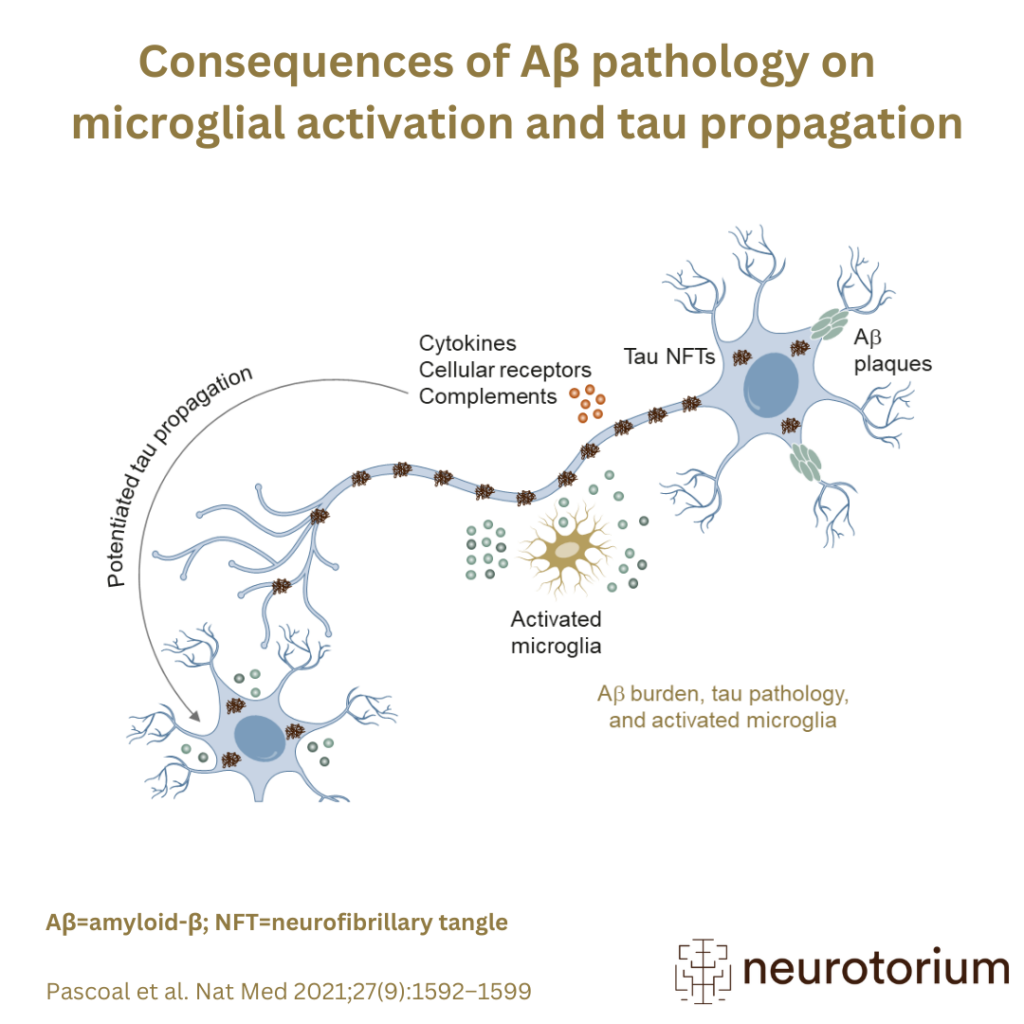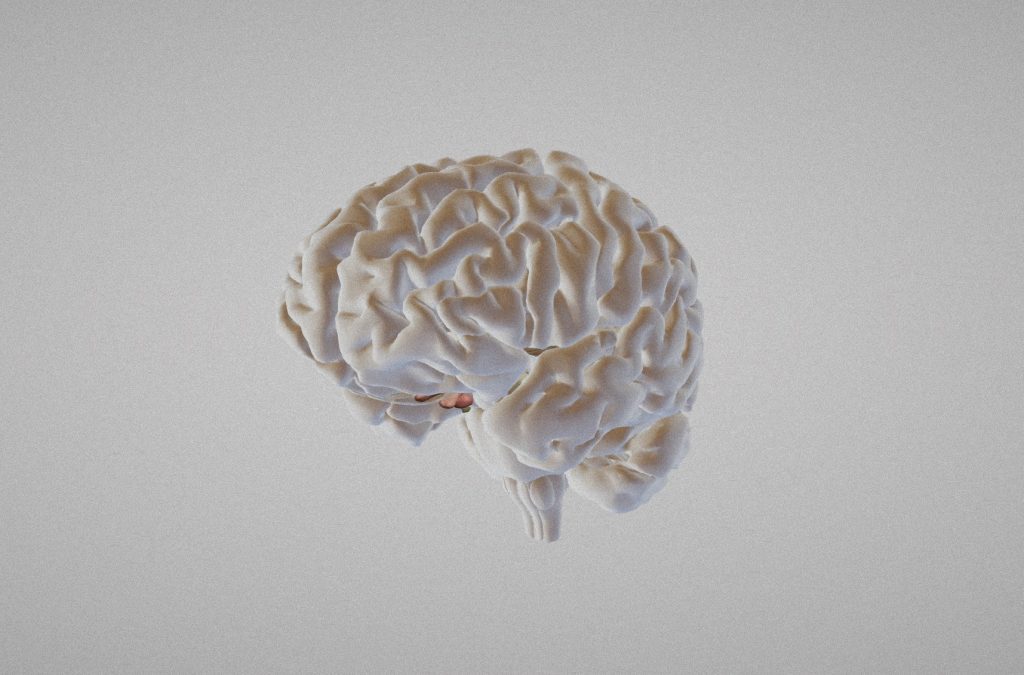Slide Decks on Alzheimer’s Disease
Alzheimer’s disease (AD) is a neurodegenerative disease that causes gradual cognitive decline and dementia. AD symptoms can be divided into three categories – cognitive, functional, and neuropsychiatric. Cognitive symptoms in AD include memory, language, attention, visuospatial skills, and executive functions. Functional symptoms may be initially observed in work or social situations, progressing to problems with finances and self-care, eventually resulting in a complete loss of independent function for some individuals. Some neuropsychiatric symptoms (NPS) are key clinical manifestations of AD, with evidence that the prevalence of NPS increases with the severity of cognitive impairment. Particularly, symptoms of agitation, delusion, and irritability have been associated with worse cognitive performance.
Get an introduction to what is currently known about AD by going through our slide decks. Our slide deck is free to download and use in your presentations.

Neurobiology and Aetiology
In the preclinical phase, the first measurable evidence of AD is an abnormal reduction in amyloid-beta1-42 levels within the CSF. Following this, amyloid-beta tracer retention is observed in PET scans, directly reflecting the build-up of amyloid. As AD progresses, neurodegeneration and synaptic dysfunction can be observed using structural and functional neuroimaging techniques. Go to the slide deck.
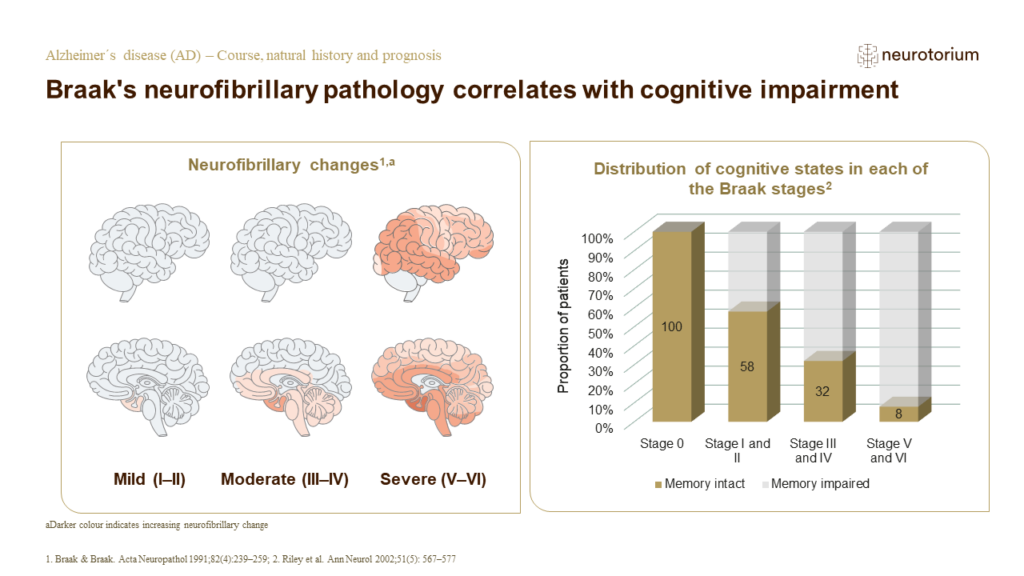
Course, Natural History and Prognosis
The staging method developed by Braak and Braak suggests that the neurofibrillary pathology of AD progresses in a relatively predictable sequence across the medial temporal lobe structures, subcortical nuclei, and neocortical areas of the brain in seven stages, with the final stage representing the absence of cortical neurofibrillary changes. Go to the slide deck.
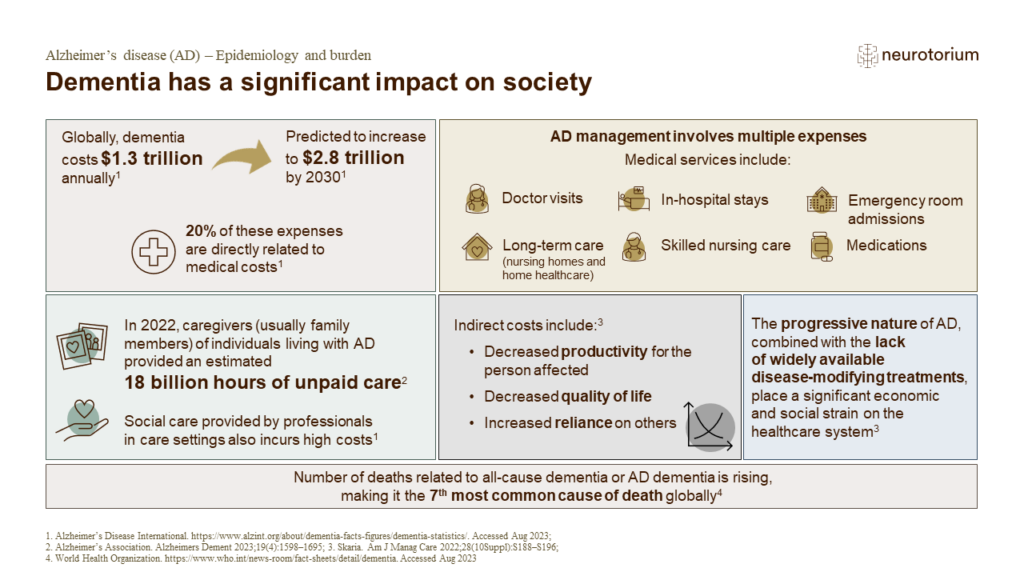
Epidemiology and Burden
Due to the aging population, there is a growing number of people who are living with dementia due to AD or related conditions. In 2020, it was estimated that over 55 million people worldwide were living with dementia. The number of people affected is set to rise to 139 million by 2050, with the most significant increases in low- and middle-income countries. Go to the slide deck.
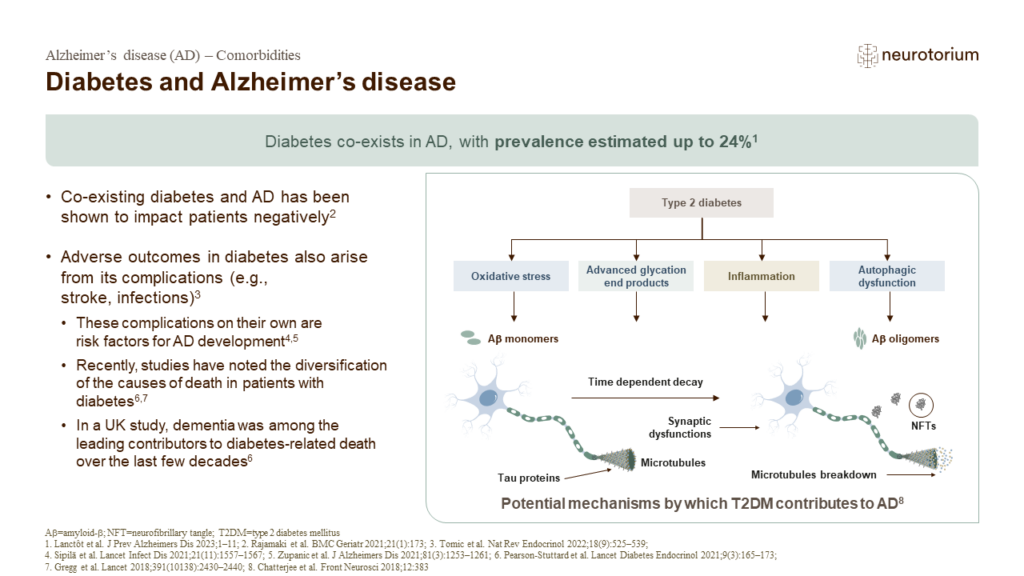
Comorbidities
Comorbidities are common in people living with AD where chronic comorbidities co-exist, such as diabetes and cardiovascular diseases. The relationship between comorbidity and AD is multifaceted, and causal relationships are difficult to disentangle. This slide deck describes current knowledge on the general medical and psychiatric comorbidities of AD. Go to the slide deck.
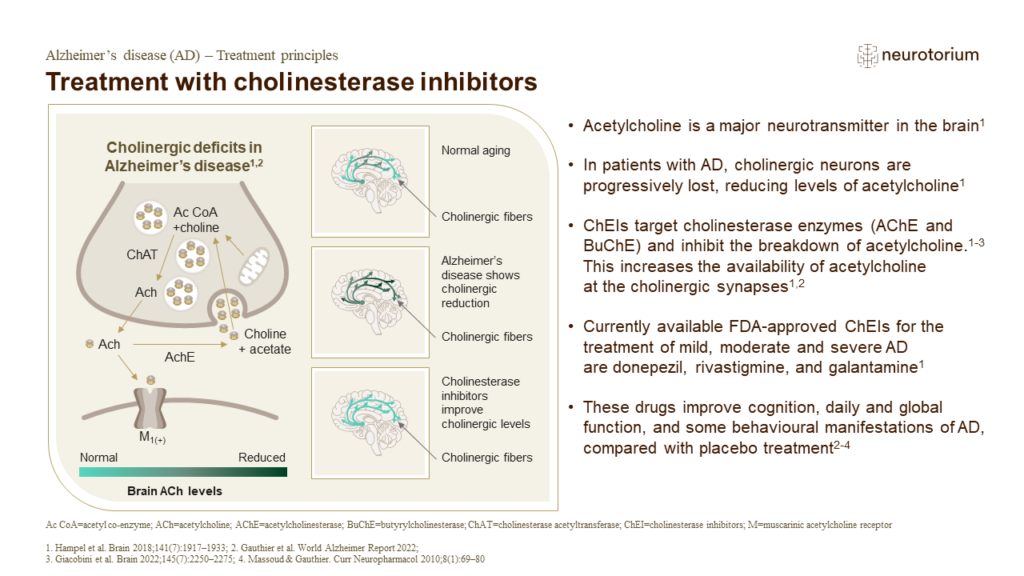
Treatment Principles
Treating AD involves managing multiple symptoms and minimizing long-term clinical deterioration. In this slide deck you will find basic concepts and definitions related to approaches such as disease-stage-specific treatment and psychosocial therapies. The slide deck also offers a brief introduction to general considerations for managing Alzheimer’s disease. Go to the slide deck.
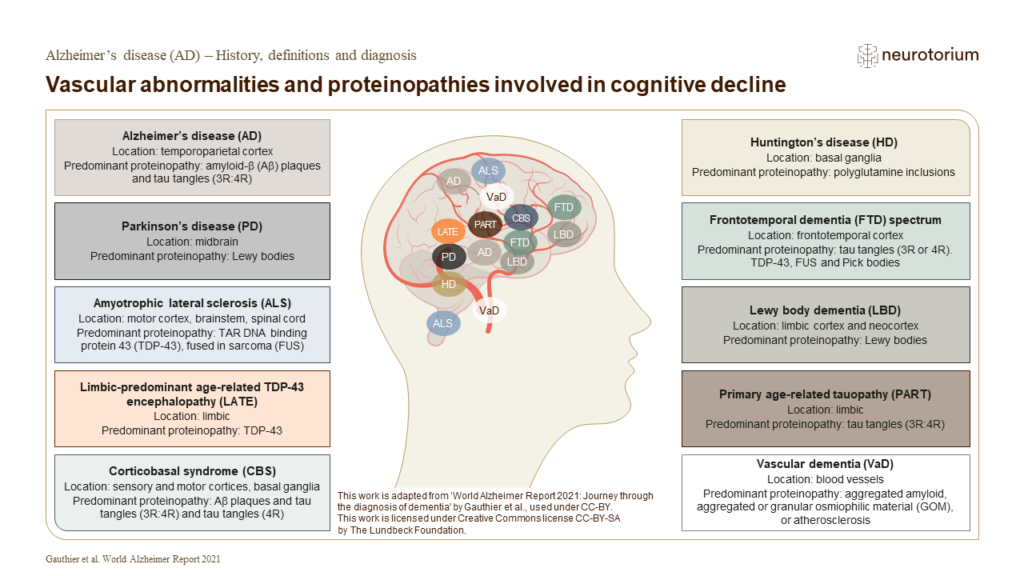
History, Definitions and Diagnosis
Alzheimer’s disease (AD) refers to the abnormal presence of Aβ and tau proteins, which define AD among many other neurodegenerative diseases. Dementia -including dementia due to AD- is likely to be underestimated because of underdiagnosis and misdiagnosis. Go to the slide deck.
Articles on Alzheimer’s Disease
Considerable advancements in AD research have been made over the years, working towards a reality of early identification with in-vivo biomarkers and multimodal treatment of patients with AD. Several disease-modifying therapies, such as agents targeting amyloid accumulation, tau pathology, and others, are being investigated.
- Modifiable Risk Factors for DementiaAccording to the 2020 Lancet report on dementia prevention, 40% of dementia cases could be prevented or delayed by addressing 12 risk factors: low educational attainment, hypertension, hearing impairment, smoking, obesity, depression, physical inactivity, diabetes, low social contact, excessive alcohol consumption, traumatic brain injury, and air pollution. This article discusses some of these modifiable risk factors for dementia and what actions individuals can take to minimize their dementia risk.
- Biomarkers for the in vivo diagnosis of Alzheimer’s diseaseAlzheimer’s disease (AD) is a progressive neurodegenerative disorder that results in gradual cognitive decline and dementia. Definitive diagnosis of AD requires an autopsy evaluation of the brain to investigate the presence of amyloid-β plaques and tau neurofibrillary tangles. If these brain pathologies are observed in various brain regions, a diagnosis of AD can be made.
- A Perspective on Inflammation in Alzheimer’s DiseaseIn familial disease associated with PSEN-1 mutations, symptomatic carriers show progressive loss of cortical thickness in areas involved in Alzheimer’s Disease (AD). In contrast, in asymptomatic carriers increased thickness suggests that inflammatory processes or reactive neuronal hypertrophy may be involved in the preclinical phase. Further evidence of a non-linear trajectory in neuroanatomical changes comes from studies relating cortical thickness to beta-amyloid levels in CSF. The context for such studies is growing interest in diagnosing early stages of AD through biomarkers rather than clinical signs and symptoms.
- Alzheimer’s Disease and AgitationAgitation is a frequent and distressing feature of advanced Alzheimer’s Disease (AD) and other dementias and its adequate management – non-pharmacological or pharmacological – is a major unmet need.
- European Brain Council’s Value of Treatment Project Aims to Optimize Care for Brain DisordersThe Value of Treatment (VoT) Project is a ground-breaking initiative of the European Brain Council (EBC), that argues optimizing interventions in mental health and neurological diseases can bring both positive outcomes for patients and socio-economic gains for society
Watch The Videos on Alzheimer’s Disease
Access our series of videos, where we complement recent articles by explaining complex topics, breaking down detailed figures, discussing current issues, and illustrating key concepts. Dive into the varying severity of cognitive impairment in individuals living with Alzheimer’s Disease (AD) and the importance of early diagnosis for effective care, among other crucial topics.
Alzheimer’s disease (AD) is a complex progressive neurodegenerative disease characterized by the accumulation of Aβ plaques and tau NFTs, which are considered to result in neuronal loss, cognitive decline and dementia.
In this video, Professor Dr. Serge Gauthier explains what dementia is and what differentiates Alzheimer’s disease from other types of dementias.
Professor Serge Gauthier, McGill University Research Centre for Studies in Aging, Montréal, Québec, Canada.
Download Illustrations & Figures on Alzheimer’s Disease
Download and utilize images illustrating pertinent aspects of Alzheimer’s disease. Selected images provide insights into high-performing CSF and plasma biomarkers summarizing Alzheimer’s disease diagnosis, brain metabolism PET imaging in Alzheimer’s disease, and Amyloid-PET imaging in Alzheimer’s disease.
3D Brain Atlas
Studies indicate that biological changes in the brain begin approximately two decades before the clinical onset of AD symptoms[1]
- The staging method developed by Braak and Braak suggests that the neurofibrillary pathology of AD progresses in a relatively predictable sequence across the medial temporal lobe structures, subcortical nuclei, and neocortical areas of the brain in seven stages, with the final stage representing the presence of cortical neurofibrillary changes.
- In vivo neuroimaging data from neuropathological studies show a spatiotemporal development of Aß deposits in the brain, which originates in the cerebral regions and spreads from the neocortex, to the allocortex, to the brainstem, finally reaching the cerebellum.[2,3]


